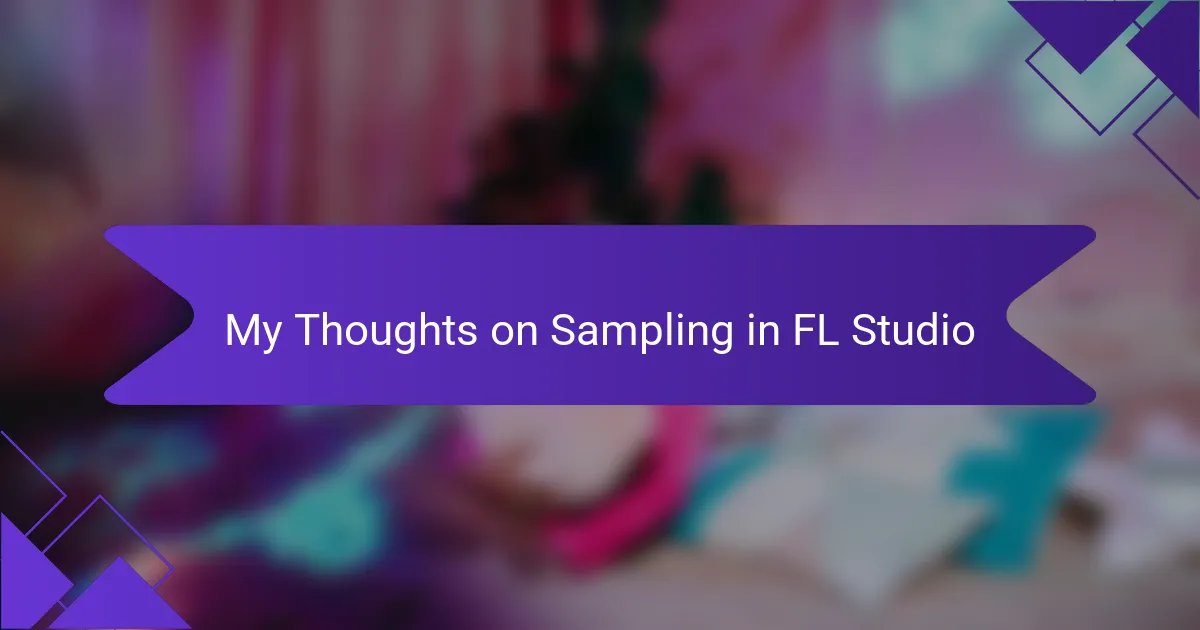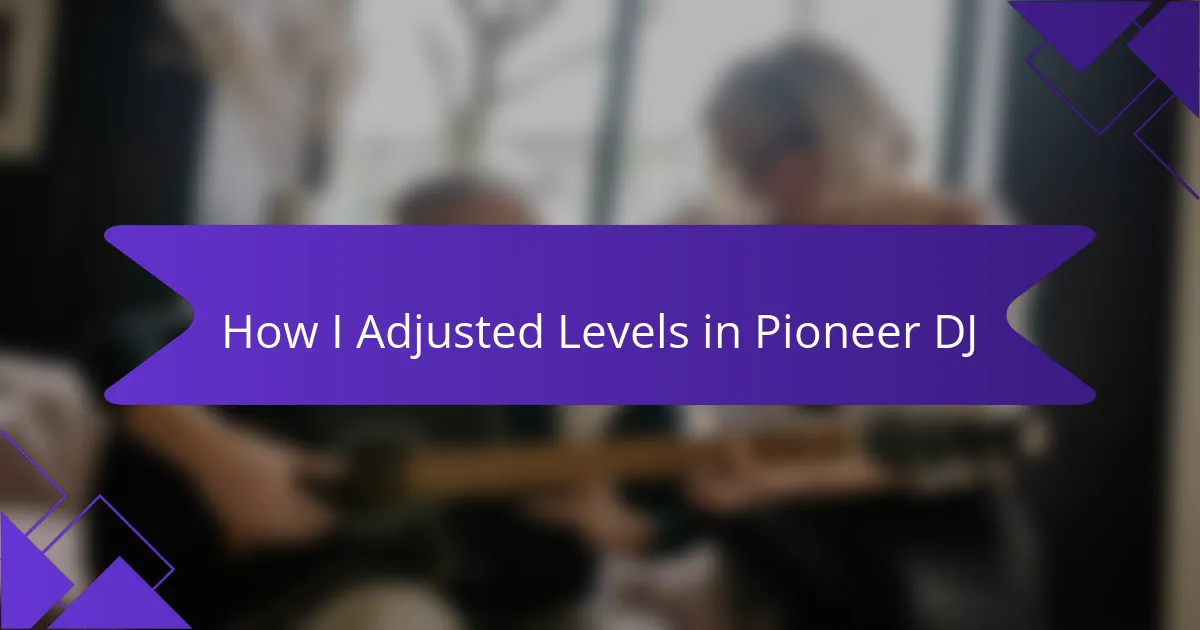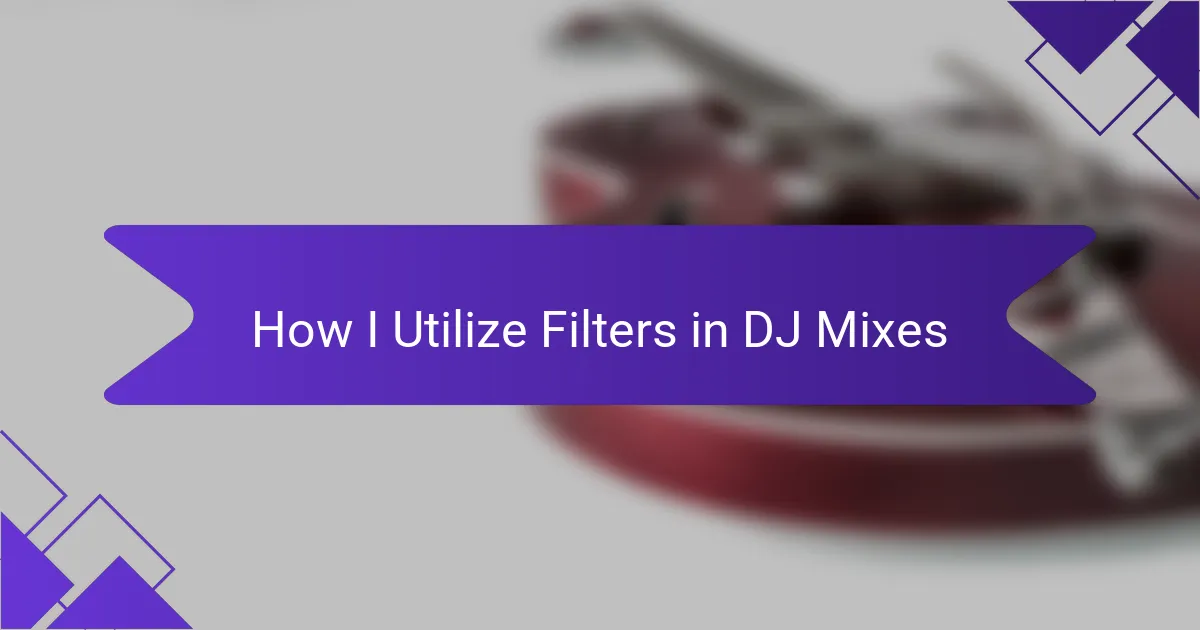Key takeaways
- DJ entertainment is about creating immersive experiences through the art of mixing music, engaging with the audience, and incorporating various genres.
- Mixing techniques are essential for transforming the energy of an event and utilizing technology fosters enhanced creativity and innovation.
- Virtual DJ software democratizes music mixing, enabling both beginners and professionals to explore their craft with accessible tools and features.
- Familiarity with software, including techniques like hot cues and effects, significantly improves mixing quality and audience engagement.

Definition of DJ Entertainment
DJ entertainment refers to the art of blending music tracks to create an engaging and lively atmosphere for events like parties, weddings, and festivals. I remember the first time I felt the electric energy of a live DJ set. The way they read the crowd and seamlessly mixed genres was nothing short of magical. It’s about more than just spinning records; it’s about creating an experience that resonates with people.
The creativity involved in DJing allows for personal expression through sound. This isn’t just about playing songs; it’s about constructing a unique auditory journey that connects with an audience. From my experience, the best sets often tell a story, weaving together different beats and melodies that evoke a range of emotions.
- Combining different musical genres.
- Engaging with the audience to enhance the experience.
- Utilizing technology and techniques to create seamless transitions.
- Elevating events by creating a lively atmosphere.
- Personal interpretation of music, making each performance unique.

Importance of Mixing Techniques
Mixing techniques are the backbone of any DJ set, shaping how the music flows and affects the audience. I’ve seen firsthand how a well-executed transition can take a dance floor from low energy to explosive excitement. It makes me wonder—how can a simple change in tempo or genre transform the entire vibe of a party?
When I think about combining different musical styles, it’s not just about throwing tracks together; it’s about finding a common thread that resonates. I remember a night when I mixed hip-hop with classic rock, and it took the crowd by surprise in the best way. Each blend creates a unique soundscape, ensuring every performance feels fresh and personal.
Utilizing technology in mixing not only enhances the experience but also allows for innovative creativity. I recall when I first experimented with beatmatching and looping—suddenly, I could create layers of sound that captivated the audience. It’s fascinating how these techniques enable us to elevate events, making them unforgettable for everyone involved.
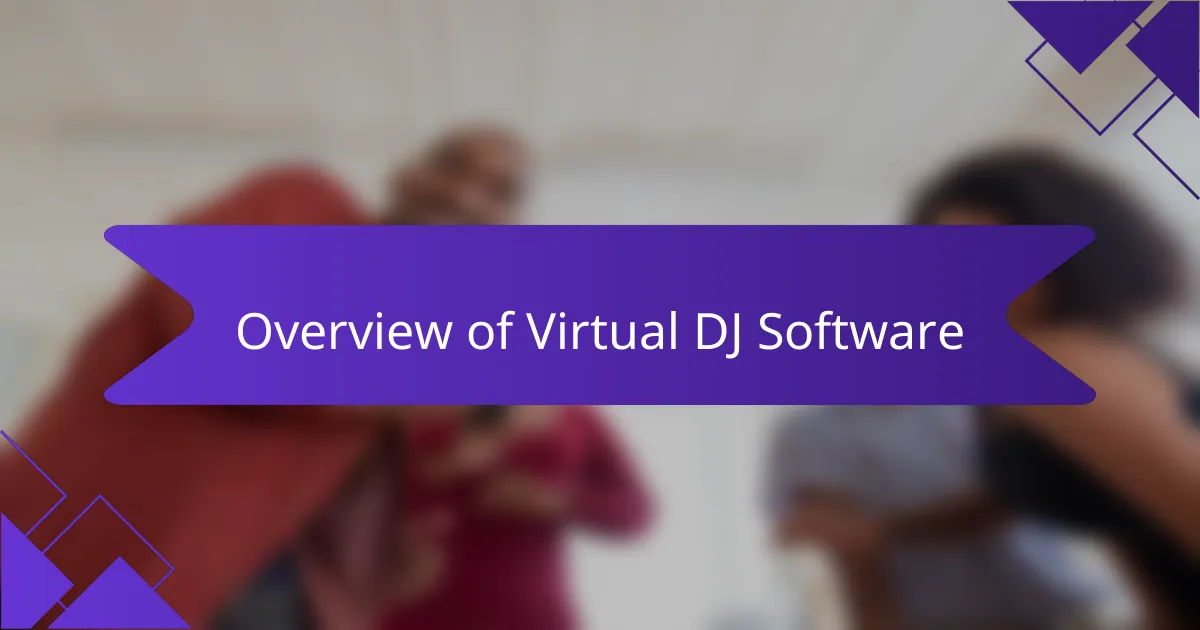
Overview of Virtual DJ Software
Virtual DJ software has become a fundamental tool in the DJ community, offering features that make mixing easier and more accessible. From my experience, the intuitive interfaces and robust capabilities, such as beat matching and effects, allow even novices to create impressive mixes. I’ve personally enjoyed experimenting with various sound effects, which often inspire spontaneous creativity during my sets.
What’s fascinating about virtual DJ platforms is their ability to accommodate both beginners and seasoned professionals. I remember my early days of mixing—virtual DJ software made it possible for me to hone my skills without the need for extensive hardware. This accessibility has definitely transformed the way aspiring DJs approach their craft.
Here’s a comparison table for some popular Virtual DJ software options:
| Software | Key Features |
|---|---|
| Virtual DJ | Real-time audio video mixing, automatic beat-matching |
| Serato DJ Lite | Intuitive layout, seamless integration with hardware |
| Rekordbox DJ | Performance features, powerful organization tools |
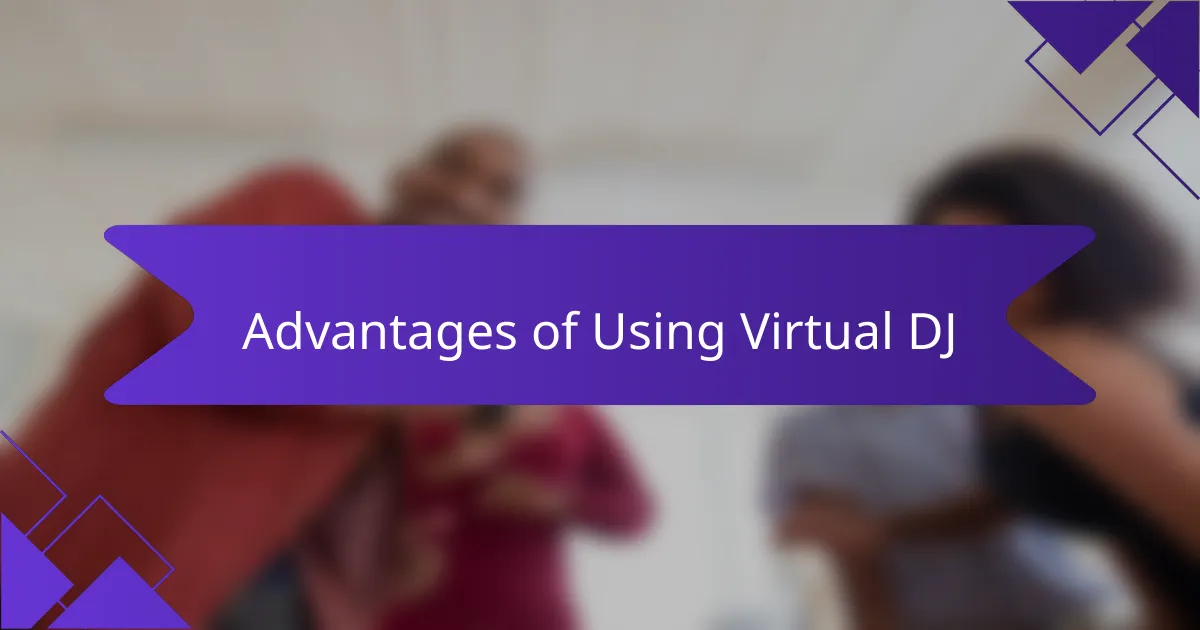
Advantages of Using Virtual DJ
The advantages of using Virtual DJ are numerous and often transformative for a performer’s creativity. For me, one of the standout features of this software is its ability to provide real-time visual feedback, which offers immediate insights into how your mixes are resonating with the audience. I remember a particularly electrifying night when I adjusted sound levels and triggered effects on the fly, and the crowd responded with palpable enthusiasm. It was a pure reminder of how technology can enhance the DJ experience.
Another huge advantage is the built-in library management tools that streamline track organization. In my early mixing days, I spent far too much time searching for the right songs in a cluttered collection. With Virtual DJ, I can categorize and access tracks seamlessly, which saves time and allows me to focus on delivering an unforgettable performance. Have you ever lost the rhythm because you couldn’t find the next song? That’s an experience I try to avoid at all costs.
Accessibility is definitely a key benefit as well. The software allows both newbies and seasoned veterans to explore their creativity without significant barriers. I cherish my journey from a beginner to a confident DJ, and Virtual DJ played a pivotal role in that transformation. I can still recall the excitement of discovering new mixing techniques at my own pace, which inspired me to push my boundaries and experiment more. It really feels empowering to know that anyone can pick up this software and start crafting their unique sound today!
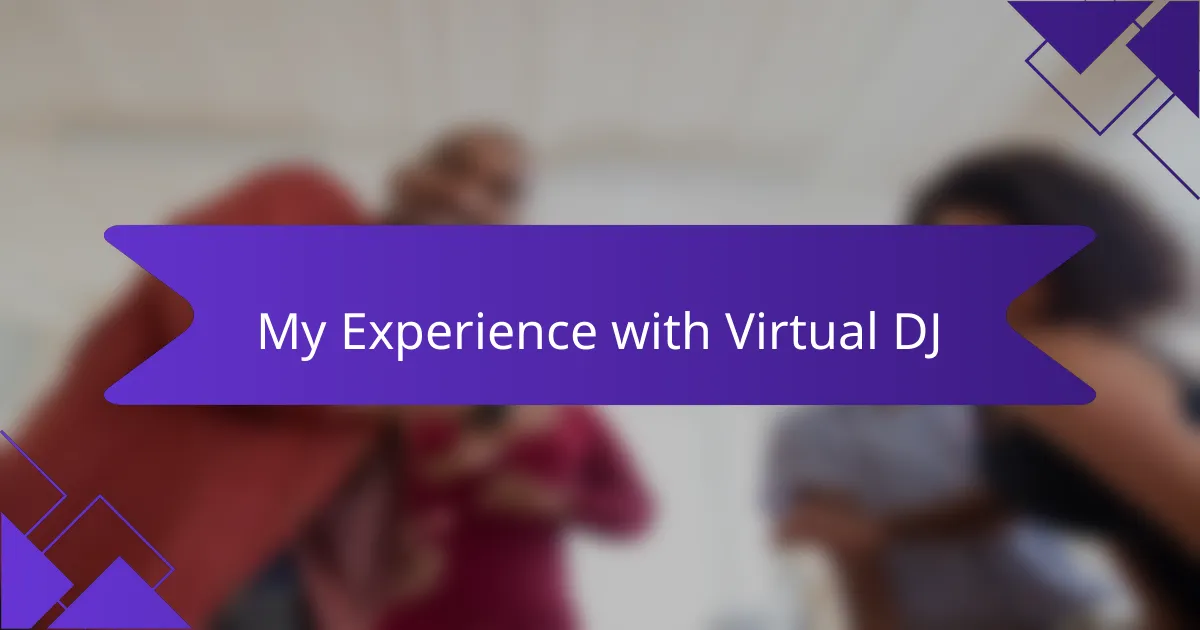
My Experience with Virtual DJ
I’ve spent countless hours mixing with Virtual DJ, and I’ve found it to be an incredible tool for both beginners and seasoned DJs. The intuitive interface allows me to get lost in my creativity, experimenting with different beats and effects. I remember one night, when I played a surprise set at a friend’s party, using Virtual DJ to seamlessly blend tracks that got everyone dancing—it was exhilarating!
- The ability to access a vast library of music enables spontaneous mixing on the fly.
- I appreciate the visual interface; seeing waveforms helps me understand how tracks align and interact.
- The built-in effects give me room to experiment and add my personal touch to standard tracks.
- Creating custom playlists feels empowering, allowing me to tailor each performance to the crowd’s energy.
- Virtual DJ’s recording feature allows me to document my sets, providing valuable feedback for improvement.
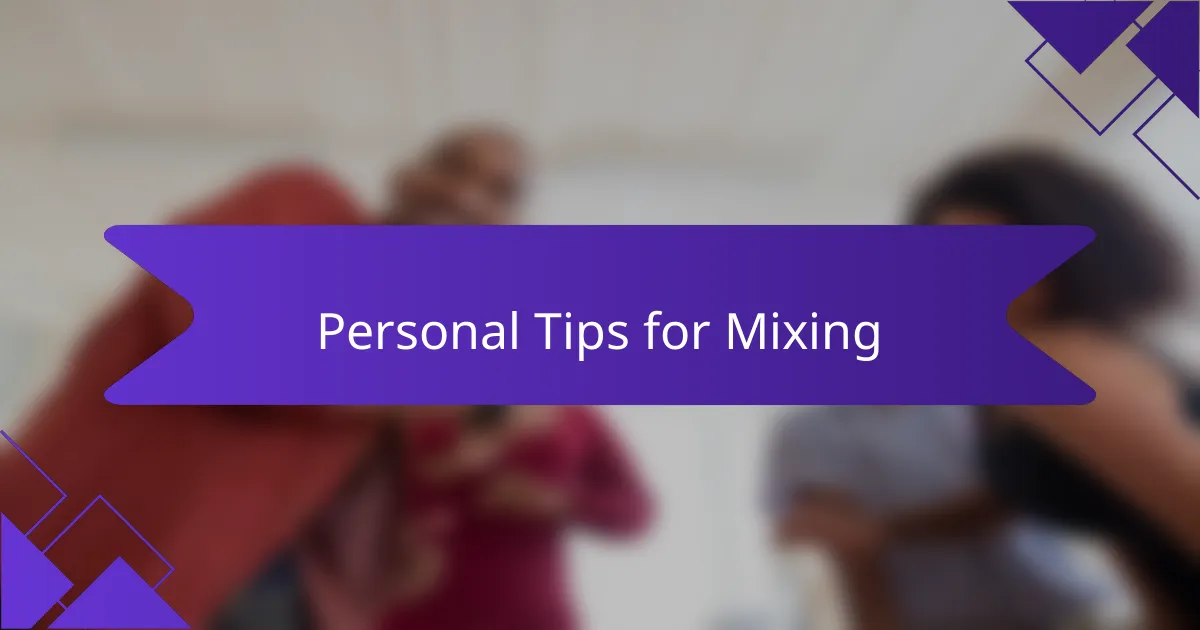
Personal Tips for Mixing
When it comes to mixing with Virtual DJ, I’ve found that familiarity with the software creates a significant edge. The more I explore its features, the more confident I feel as a DJ. I remember the first time I experimented with looping and effects; it was exhilarating to see how these tools could transform a track and keep the crowd engaged.
Here are some practical tips I’ve gathered along the way:
- Know Your Tracks: Spend time listening to your music library and trying to predict how tracks will flow together.
- Utilize Hot Cues: Setting hot cues allows for quick access to key parts of a song, making transitions smoother.
- Experiment with Effects: Don’t shy away from using effects like echoes or flangers; they can add a unique flair to your mixes.
- Practice Transition Techniques: Get comfortable with beatmatching and crossfading to ensure seamless transitions.
- Adjust Gain Levels: Keep an eye on gain levels to avoid distortion; balanced audio can make a huge difference in quality.
- Record Your Mixes: Listening back to your sets can provide insight into areas for improvement, as well as highlight your best moments.
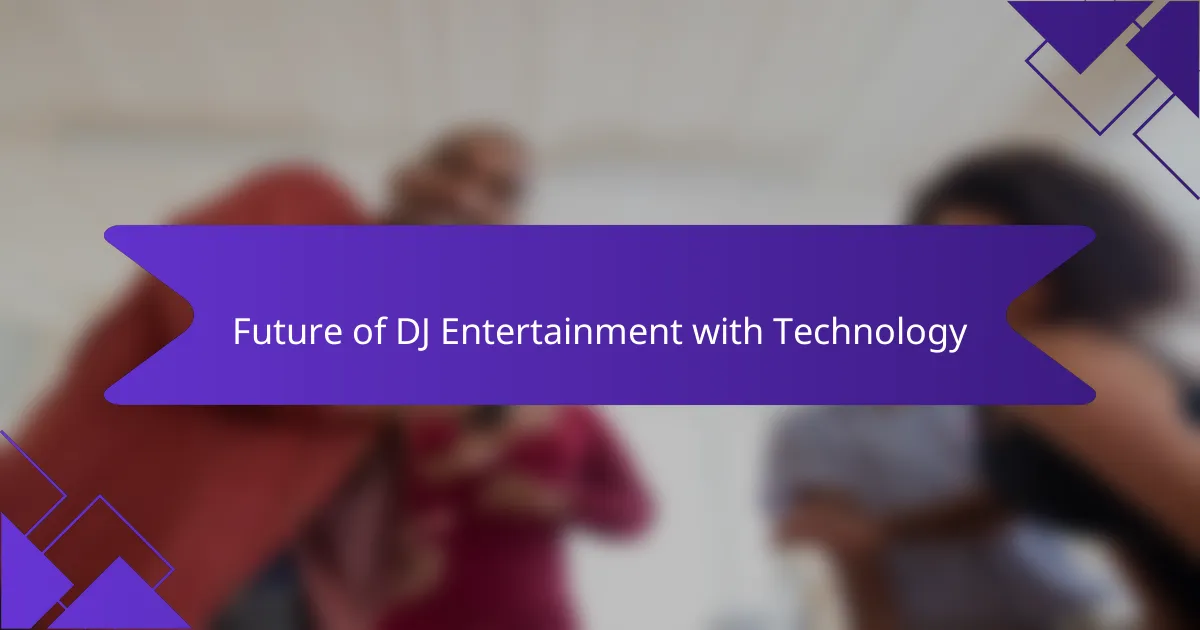
Future of DJ Entertainment with Technology
When I think about the future of DJ entertainment with technology, I can’t help but feel a sense of excitement. The rise of innovative tools like Virtual DJ allows aspiring artists to explore music mixing without the hefty investment in traditional equipment. Personally, I’ve found that software can transform anyone into a DJ, giving them access to a broader library and features that streamline the creative process.
Moreover, the integration of AI into DJ software is a game changer. These systems can analyze crowds and suggest tracks that would resonate best, which is something I believe could enhance live experiences. I’ve seen DJs adapting to these tools, making real-time adjustments that elevate the energy on the dance floor.
In terms of accessibility, technology bridges gaps, bringing diverse sounds and styles to anyone with a computer or tablet. I’ve spoke with many passionate beginners who tell me how they started their musical journey through these platforms, which inspires me every day.
| Aspect | Traditional DJing | Virtual DJing |
|---|---|---|
| Equipment Cost | High investment in hardware | Lower cost, software-based |
| Learning Curve | Steeper; requires practice | More intuitive; user-friendly tools |
| Music Library | Limited by physical media | Wider access through digital platforms |
